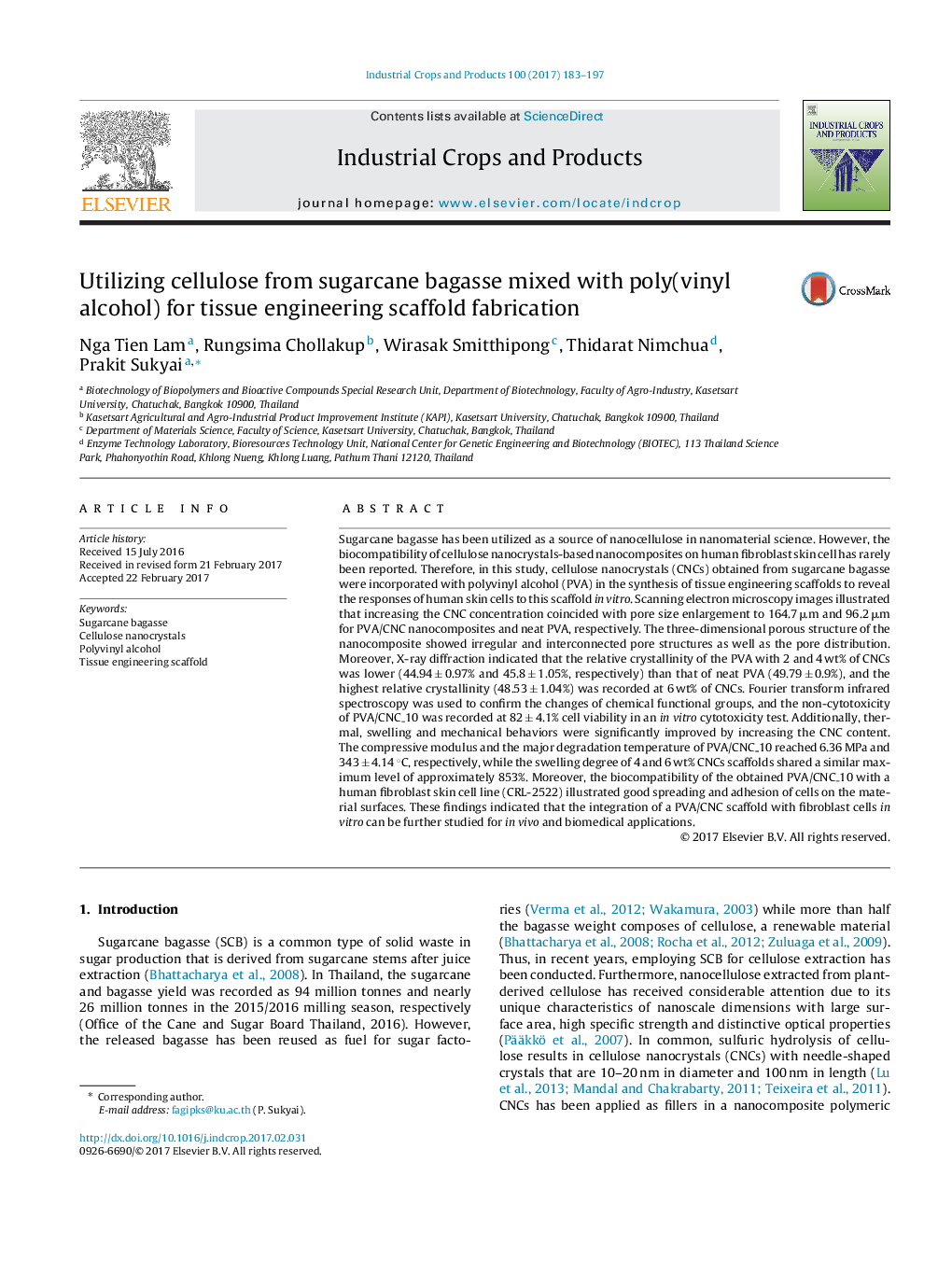| Article ID | Journal | Published Year | Pages | File Type |
|---|---|---|---|---|
| 5762191 | Industrial Crops and Products | 2017 | 15 Pages |
Abstract
Sugarcane bagasse has been utilized as a source of nanocellulose in nanomaterial science. However, the biocompatibility of cellulose nanocrystals-based nanocomposites on human fibroblast skin cell has rarely been reported. Therefore, in this study, cellulose nanocrystals (CNCs) obtained from sugarcane bagasse were incorporated with polyvinyl alcohol (PVA) in the synthesis of tissue engineering scaffolds to reveal the responses of human skin cells to this scaffold in vitro. Scanning electron microscopy images illustrated that increasing the CNC concentration coincided with pore size enlargement to 164.7 μm and 96.2 μm for PVA/CNC nanocomposites and neat PVA, respectively. The three-dimensional porous structure of the nanocomposite showed irregular and interconnected pore structures as well as the pore distribution. Moreover, X-ray diffraction indicated that the relative crystallinity of the PVA with 2 and 4 wt% of CNCs was lower (44.94 ± 0.97% and 45.8 ± 1.05%, respectively) than that of neat PVA (49.79 ± 0.9%), and the highest relative crystallinity (48.53 ± 1.04%) was recorded at 6 wt% of CNCs. Fourier transform infrared spectroscopy was used to confirm the changes of chemical functional groups, and the non-cytotoxicity of PVA/CNC_10 was recorded at 82 ± 4.1% cell viability in an in vitro cytotoxicity test. Additionally, thermal, swelling and mechanical behaviors were significantly improved by increasing the CNC content. The compressive modulus and the major degradation temperature of PVA/CNC_10 reached 6.36 MPa and 343 ± 4.14 °C, respectively, while the swelling degree of 4 and 6 wt% CNCs scaffolds shared a similar maximum level of approximately 853%. Moreover, the biocompatibility of the obtained PVA/CNC_10 with a human fibroblast skin cell line (CRL-2522) illustrated good spreading and adhesion of cells on the material surfaces. These findings indicated that the integration of a PVA/CNC scaffold with fibroblast cells in vitro can be further studied for in vivo and biomedical applications.
Related Topics
Life Sciences
Agricultural and Biological Sciences
Agronomy and Crop Science
Authors
Nga Tien Lam, Rungsima Chollakup, Wirasak Smitthipong, Thidarat Nimchua, Prakit Sukyai,
